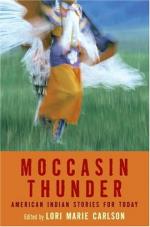|
This section contains 14,325 words (approx. 48 pages at 300 words per page) |

|
SOURCE: “The Indian in the Museum: Henry David Thoreau, Okah Tubbee, and Authentic Manhood,” in Arizona Quarterly, Vol. 54, No. 2, Summer, 1998, pp. 25-63.
In the following essay, Gilmore suggests that Native Americans were represented in nineteenth-century museums as masculine and unsubmissive—which corresponds to Henry David Thoreau's mythologized image of them.
In the February 27, 1843, edition of the New York Herald, P. T. Barnum advertised his American Museum as a “Combination Of Unequalled And Unprecedented Attractions.” An “Ethiopian Extravaganza” and “The Indian Chiefs, Warriors, And Squaws” headline the list of attractions Barnum provides to back up his claim. These Indians, the ad assures, are “no miserable, degraded half breeds, but the Wild Warriors of the Far West,” and thus, “however high curiosity may be raised, the anticipation cannot come up to the reality.” Barnum promises his patrons not only the “reality” of undegraded, wild Indians, but also delineations of “Ethiopian...
|
This section contains 14,325 words (approx. 48 pages at 300 words per page) |

|


